A river runs through it
On October 17, J. and I got a late start to the Morton Arboretum, so after the obligatory visit to the gift shop there wasn’t a lot of time left for exploring. We drove to the other side and stopped briefly at Lake Marmo, then continued on until we found a new spot for us, one that instantly fell in with — a bridge over the DuPage River. Rivers, streams, creeks — I love them — their sound, their movement, their travels, their sometimes primordial loveliness. They remind me of a fairy tale I read as a child, where the story mattered less to me than the meadow or stream where it was set. They remind me of my favorite scenes from one of my favorite movies, The Adventures of Robin Hood, in which Robin and John Little battle above a forest stream, and Robin and Friar Tuck duel through it. Although located in California, that stream embodied my imagining of the mythical magic of a Sherwood Forest that never was. I wish I could recall the name of the fairy tale book; I can never get enough of the movie.
At this point, the DuPage doesn’t run through old-growth forest, and, from what I could see, the banks are tangled and drop off steeply, so here is not the place to dip your feet in or to cross staffs or swords. I’m reminded of the Little Juniata River, which runs past Logan Valley Cemetery, where my parents, maternal grandparents, and sundry relatives are buried. In midsummer, the woods are beautifully, painfully green, and the creek burbling and cheerful. When I found a tiny leopard frog many years ago, I thought I would never be much happier than at that moment. I told my dad about my walk and my find, and he, ever the pragmatist, said, “Who knows what’s in that river these days?”
Nothing like Dad’s down-to-earth wisdom to slam me back to reality.
He was right, of course. When I take the train through the heart of Pennsylvania, underneath all the lushness of late May there’s plenty of evidence of the state’s place in the Rust Belt — decaying works scarring the hillsides; runoff tunnels spewing into the rivers and streams; rivers and streams turned unnatural shades of opaque brown by decades of industrial abuse. As I’ve mentioned before, one of the best parts of my childhood trips to Pennsylvania was when we’d stop at our favorite springs, where cool, clear, wonderful water flowed from fissures in the rocks. We’d fill up cups and jugs after drinking our fill straight from the little stream, all the while knowing that the water would never again be as good as within the first few seconds it splashed out of the cliff’s side.
But, not long after my memory, we ceased to stop because all the springs had been closed, with warning signs posted — due to coal mining runoff and pollution, that marvelous, seemingly pure water was no longer fit to drink. Maybe it hadn’t been for years.
I was still pretty young, and my disappointment proportionally great. For me at the moment, the world changed from a magical place full of wonders such as pure mountain water to one that been degraded, even ruined.
Fairy tales weren’t true after all. I grew up.
That was in the 1960s or early 1970s, when wading into Lake Erie meant getting entangled in ropes and ropes of algae, only to be stared at by the remorseless eye — or eye socket — of dead fish; when after a walk in the rain while wearing a bathing suit I’d feel my skin burn from the acid that came down with it; when the Cuyahoga River caught fire in 1969. I would like to think we’ve learned from the lessons of DDT, dioxin, and Rachel Carson’s Silent Spring and The Sea Around Us, but for every step forward, there seems to be at least one back. Aquatic creatures, endangered or not, from the St. Lawrence River to the Sea of Japan suffer from systems loaded with toxins. The postcard-perfect Bay of Bengal has become a cesspool of rusting metal and toxic waste from unregulated ship salvage work. Seafood lovers are warned which species to avoid if they don’t enjoy a little mercury with their fish. Seabird chicks on the most remote islands routinely die from ingesting small bits of plastic brought to them by their deceived and hapless parents.
That’s not to mention climate change and melting sea ice, which has affected us before we can even come to a consensus that it’s real.
All that may seem a long way from the DuPage River as it glides through the Morton Arboretum, but really it is not.
Water is fluid. Through rivers, above- and underground, rain, snow, glaciers, melt, and a hundred and more means, water from here is bound to end up there, along with everything it picked up along the way. Together with air, it’s both a vital and shared resource. The droplets of dew on this morning’s roses could be miles away in a week — in another country or another continent, up in the atmosphere, down under the ground. Every drop is sacred. That is no fairy tale.
On November 1, we returned to the Morton Arboretum, shopped a bit, and checked out the coffee photography exhibit — more proof of how connected the people of this planet are. We thought we had plenty of time, so when the older woman driving the tram told us there were no more tours this day; “the sun is sinking fast,” this idea kept nagging at me. I checked the time and told J. we had about an hour and 40 minutes until sunset. Wishing to be more precise, thinking of the driver’s words, and unconsciously aware of the sun’s low beams, I checked MoonPhase on the iPhone. It was only then that it hit me that, because of the time change, we had only 40 minutes — and counting. So we hightailed to the arboretum’s west side, where I wanted to see the river near the “Plants of the Ozarks,” close to the underpass under the highway.
We passed two cyclists who had parked their bikes and were sitting on the bridge over the river, looking into the setting sun, and parked by a marshy area of tall grasses, where a closer look revealed a number of half-hidden ducks. We weren’t hidden, though, and the ducks subtly veered off through the grasses and congregated a little further from the parking area. If either of us spoke a little too loudly for their comfort, one or two would quack even more loudly in protest.
Leaving the irascible ducks in peace, we backtracked along the main route to the river and took the trail westward along its northern shore (before it curves north) when we noticed rustic footbridges in that direction. I wanted to see them, and I was fascinated by how, to the east of the vehicle bridge, the unruffled river barely flowed, yet underneath the bridge and beyond it swirled and poured in a small torrent.
As I crossed the first rustic bridge parallel to the river, with J. behind me taking photos, I wondered what the relationship of this stream was to the DuPage. When I arrived at the other footbridge, this one crossing the river, and looked downstream, I spotted another vehicle bridge — and it finally occurred to me that that was where we’d drive the week before. No need to hurry back to the car if we wanted to get to that spot again — it was right in front of us. The north-side trail had looped to follow a tributary, so we crossed the footbridge to the southern edge, where there was no trail, our feet crunching loudly through layers of leaves until we ended up at the other vehicle bridge we’d crossed last week.
Not realizing at first that there was no way over the tiny tributary (although the unbroken line of tall grasses that outlined its edges gave me a clue), we headed away from the river and promptly flushed a great blue heron from the tall grasses. J. tried to photograph it in flight in the growing dusk, but it moved too swiftly. See it land in a leafless area of a tree at the edge of the woods, I took the camera from J. and snapped some shots of what was now a large vertical silhouette perched on the bare horizontal branches. It flew down at some point that I missed because I flushed it again, a little closer this time. It took off into the descending darkness, illuminated partly by the nearly full moon.
Unable to cross the tributary, we returned the way we had come, by which time a security vehicle was on the prowl. Unfazed, a pair of lovers stood on on a bridge in the twilight under the moon, pressing lips and bodies. Ah, love, or lust. Or, ideally, both. It was the perfect time and place for it — as long as security overlooked them.
At the car, we disturbed the almost invisible ducks before we took off in search of dinner. The week before, my handy iPhone application had led us into Glen Ellyn, where we ended up at Santa Fe, featuring a Mexican menu. Afterward, we crossed the street to the Bells & Whistles Snackery, where tables with local historic photographs shared space with Pac-Man console for children. It looked like a great place for families who are only slightly retro in their tastes. We ordered French press coffee, which ended up pressed all over me. The woman serving (the owner or manager, most likely) handled the little mishap efficiently while telling us the story of French press coffee, then brought us another pot strong enough to grow hair on my chest.
This time, the iPhone application came up with the Bavarian Lodge in Lisle, so that’s where we aimed for, more or less. J. opted for the last of the Oktoberfest pig roast, while I chose chicken paprikash, washed down with a large bottle of Samuel Smith’s organic strawberry ale. I would be dangerous (and happy) if I could get my hands on that every day.
A review I read later said the women of the reviewer’s party complained that the salads were poor and the food fattening. So I’m going to make a suggestion — if you want crisp, dark greens and healthful menu selections, excise “Bavarian” and “German” from your vocabulary right now. Family-style suburban German restaurants are not the place to cut calories. I didn’t get this body from fast food, but from the German immigrant diet — meat and potatoes.
We went back to the Morton Arboretum a third time primarily so J. could pick up bulbs for his pots, this time driving around the other side in the growing twilight.
The arboretum was a family estate for a very short time, as these things go, before it was donated for its present purpose. Still, while walking under the trees and along the DuPage, while flushing birds, I thought about how marvelous it would be to grow up with a river at your doorstep, a beautiful setting for playing and picnicking, and later for courting — in peace and privacy. I’m happy the Mortons chose to share their slice of heaven with the rest of us so we too can live and dream and watch the world flow by.
2009 is the Year of the River.




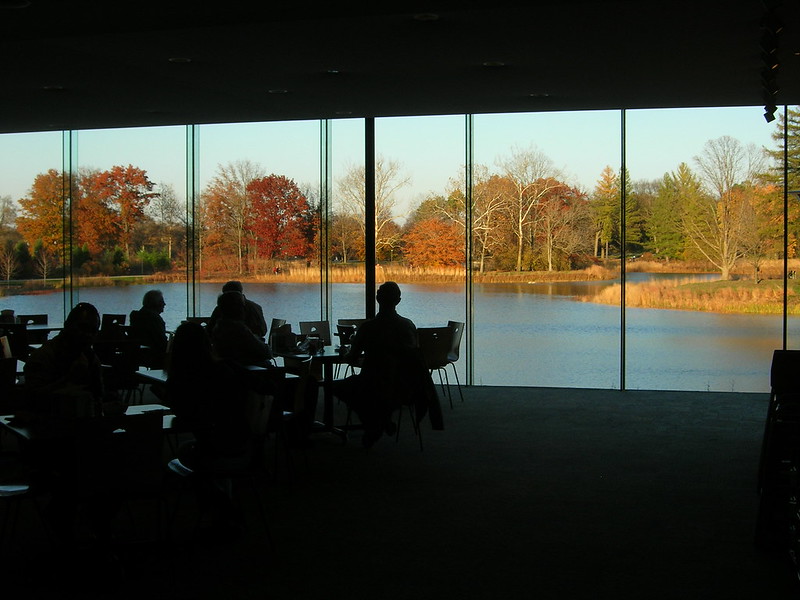
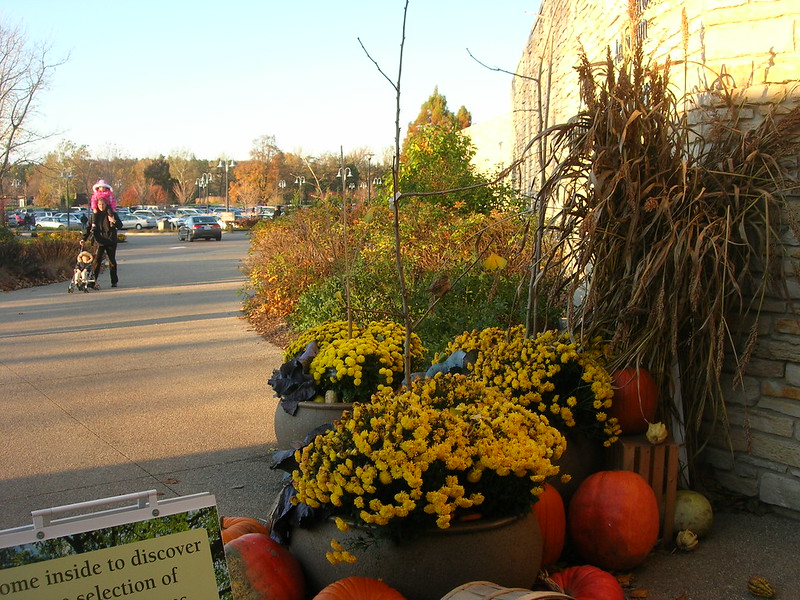
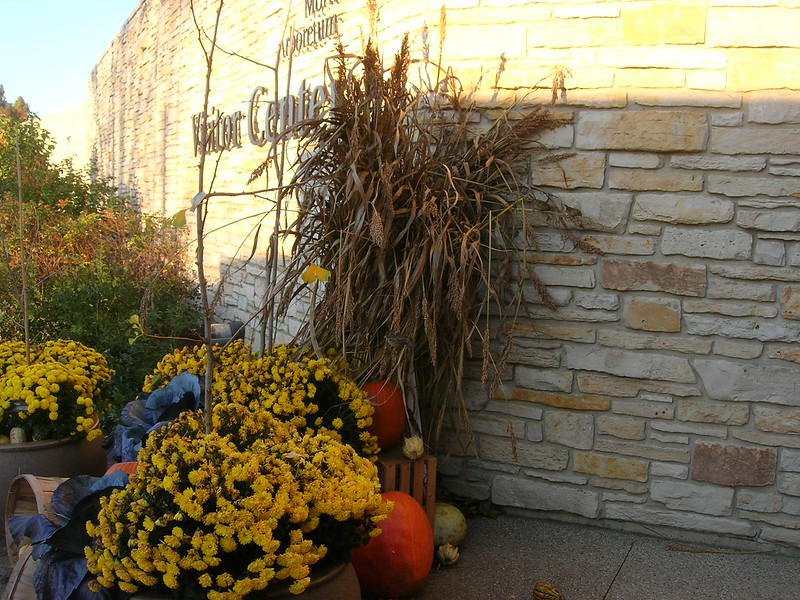



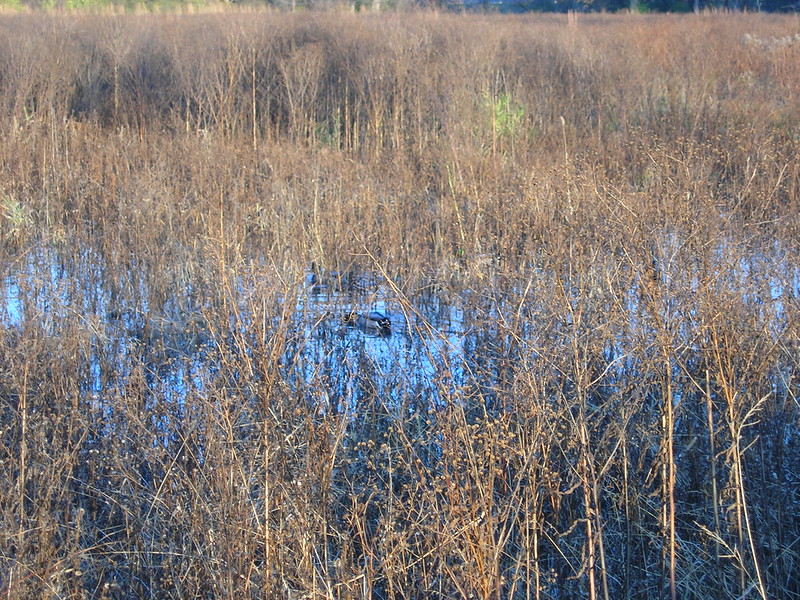
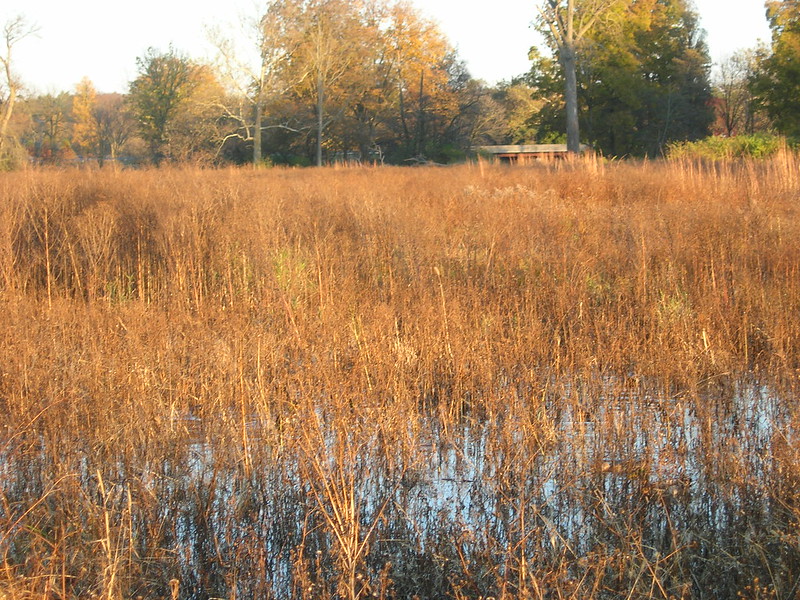

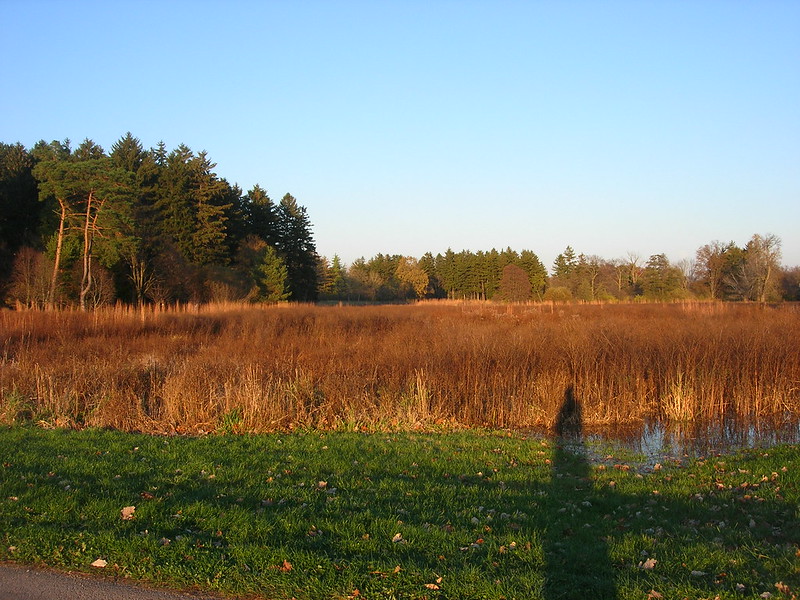

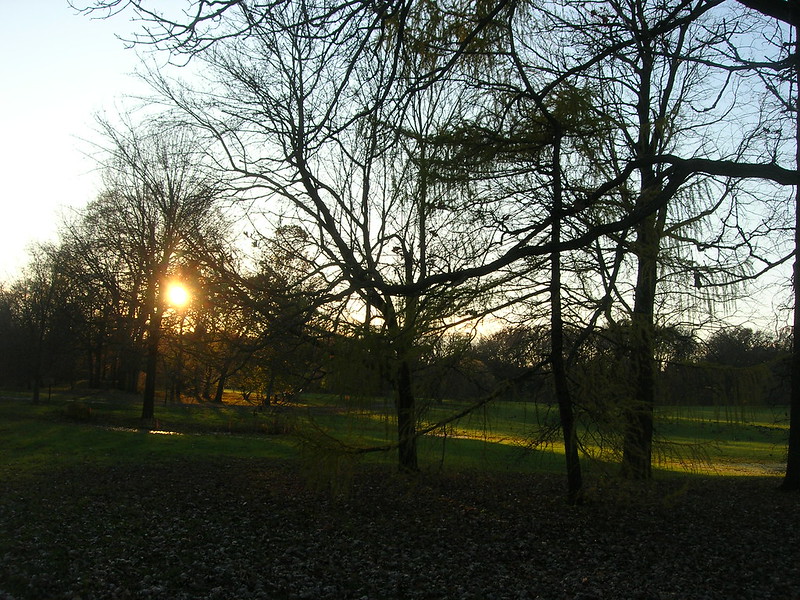




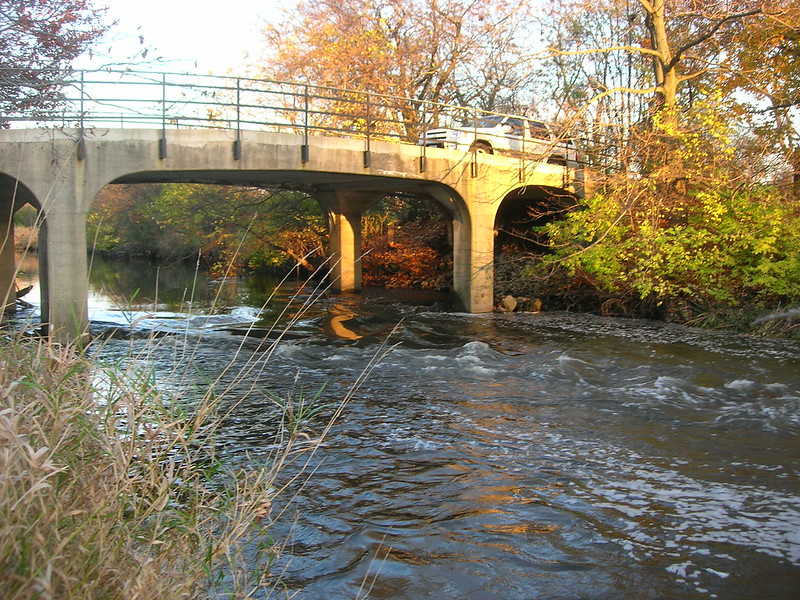
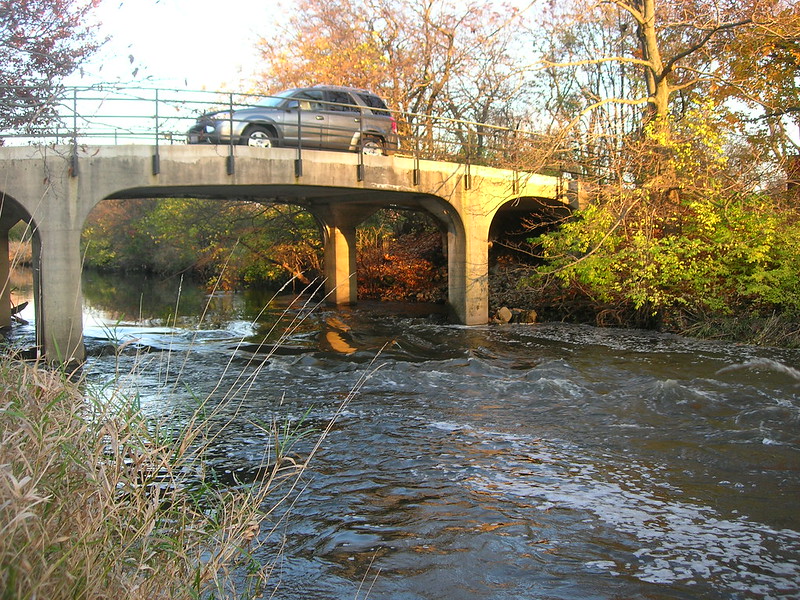
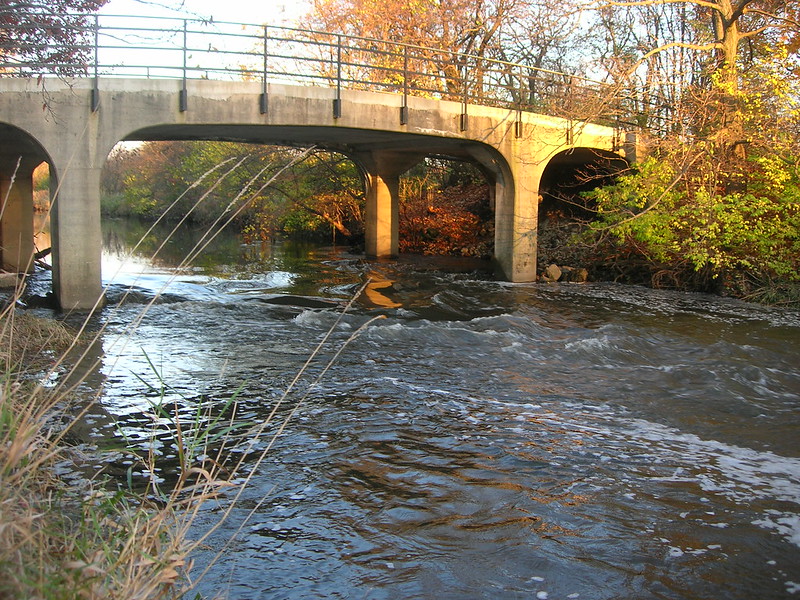



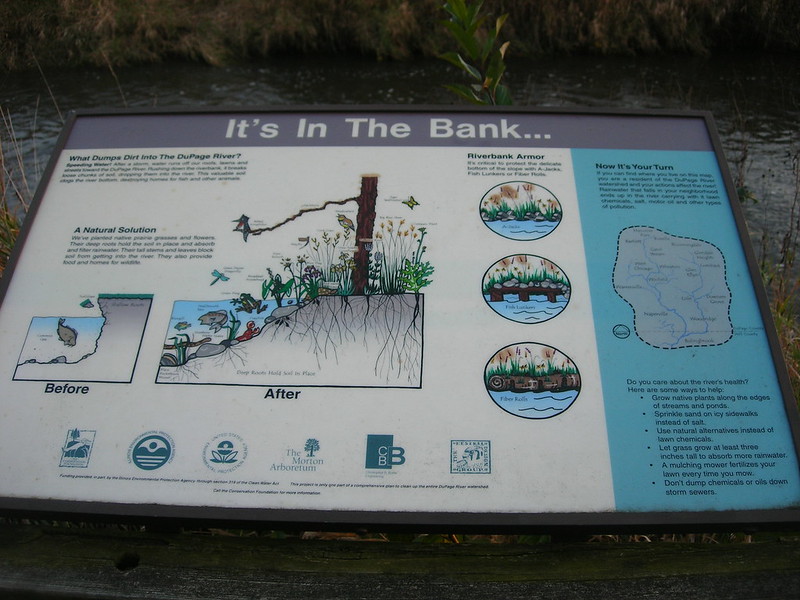

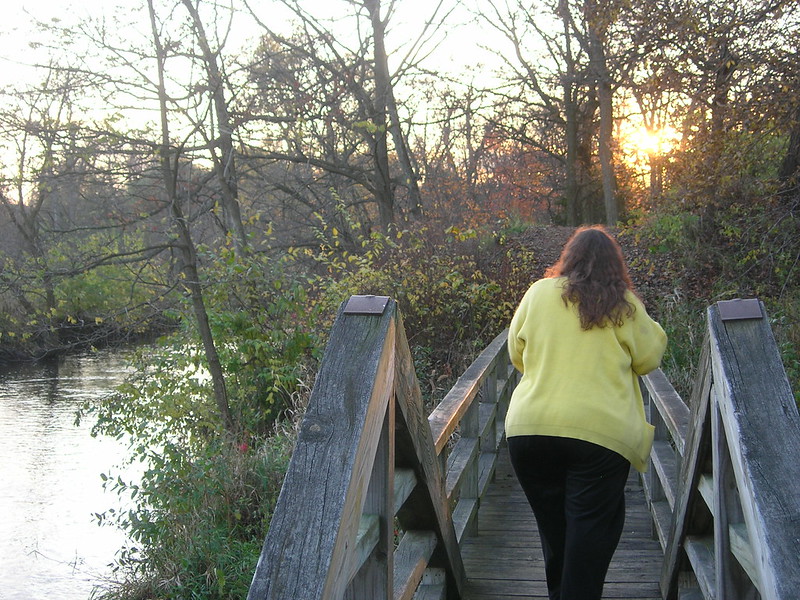

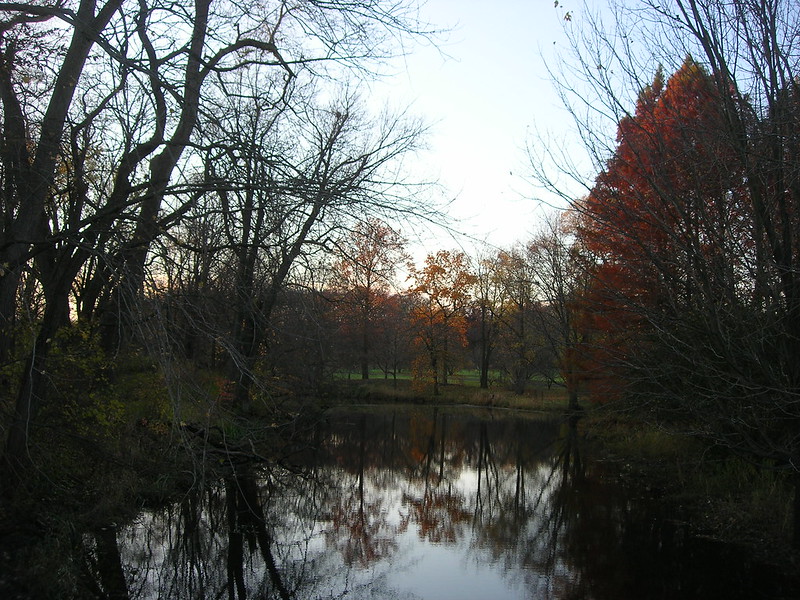

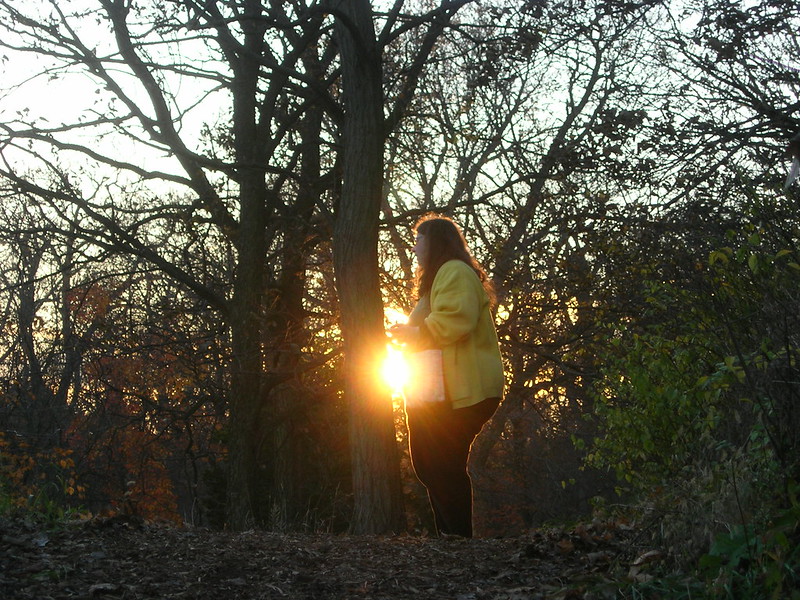
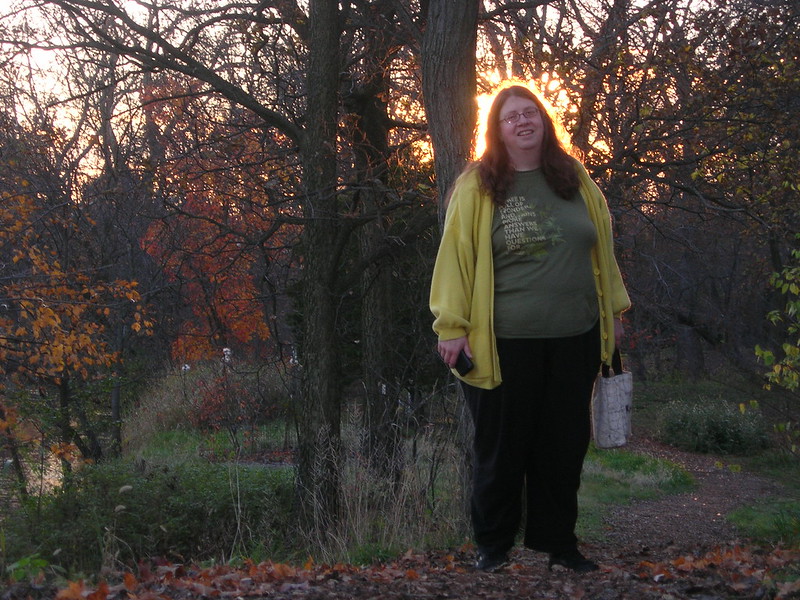
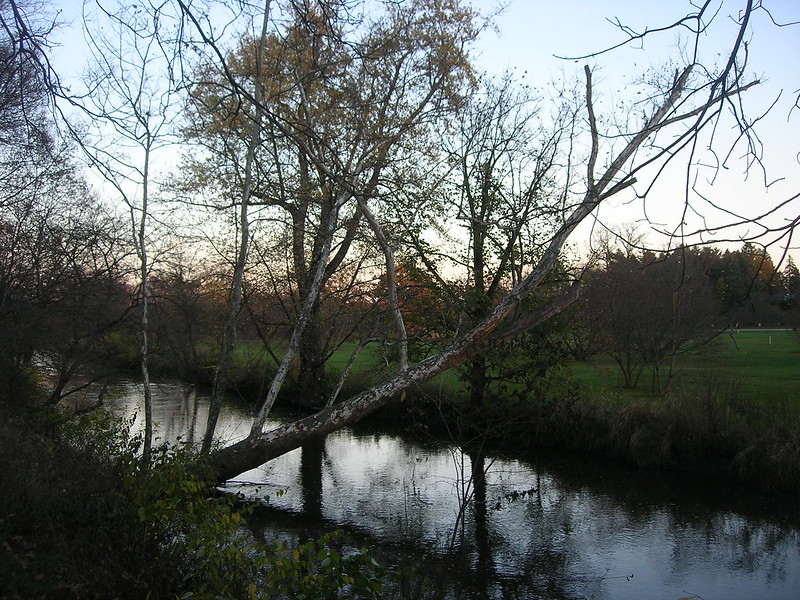
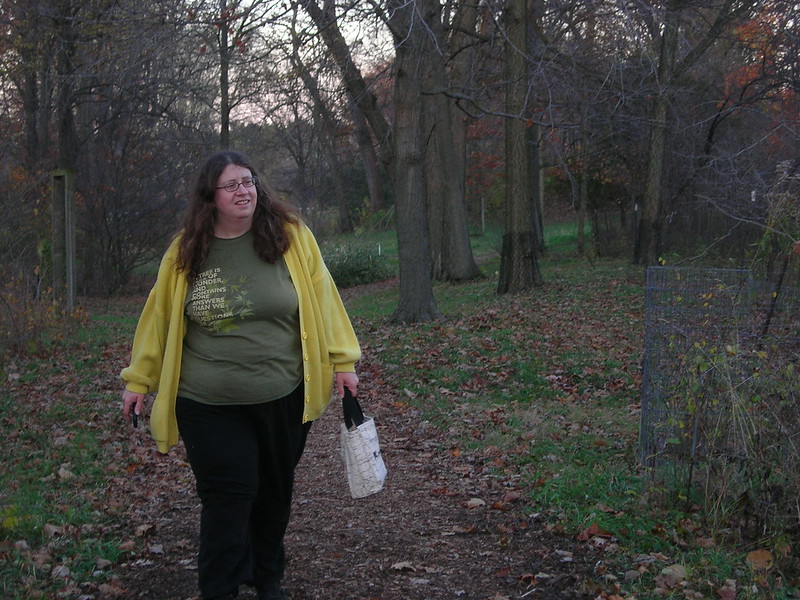

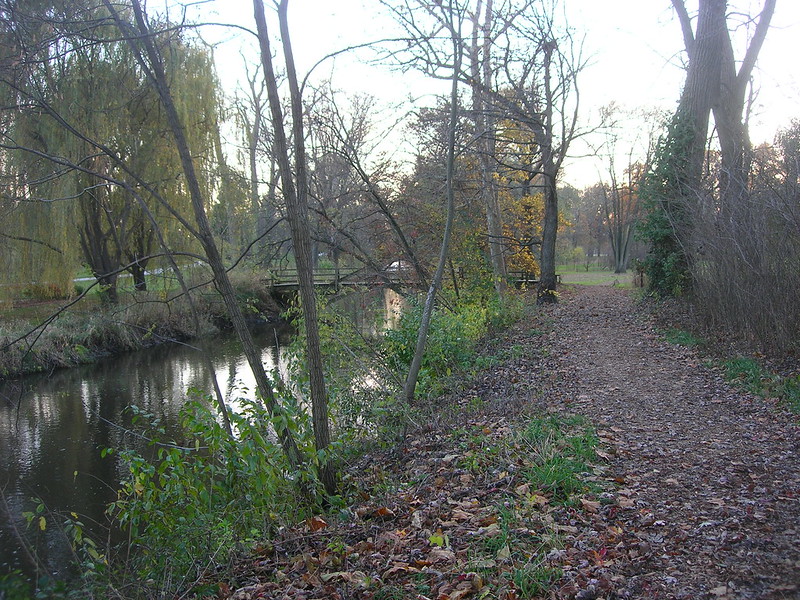
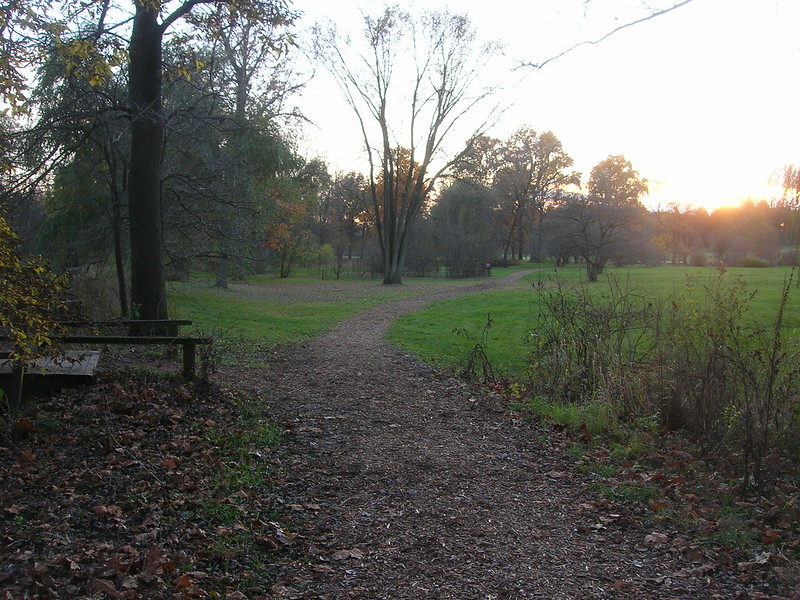

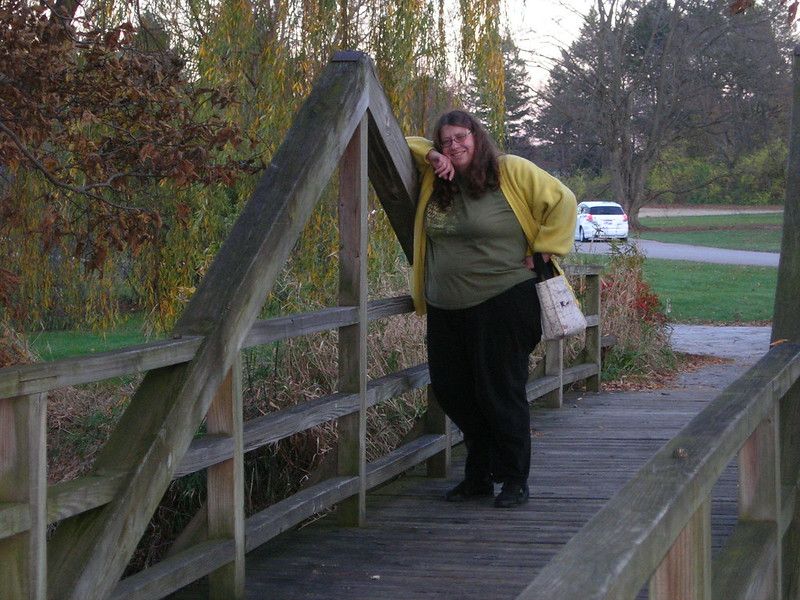


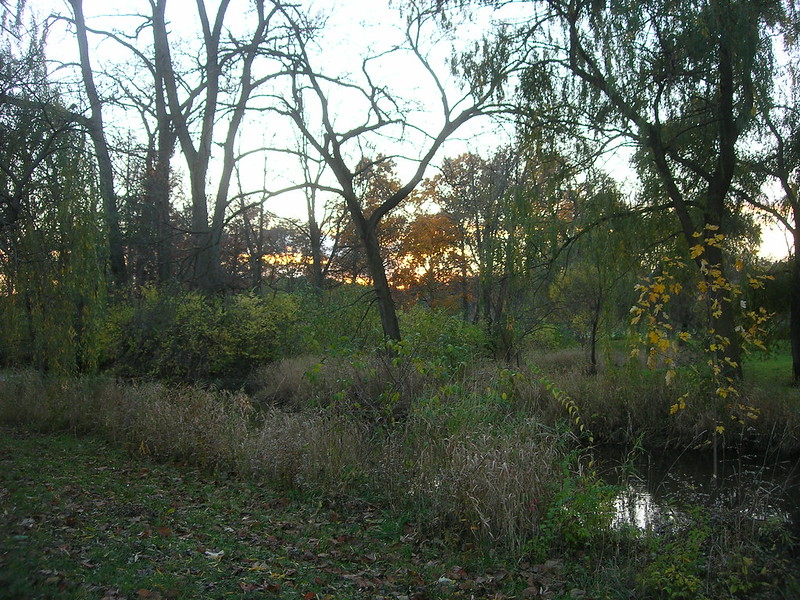







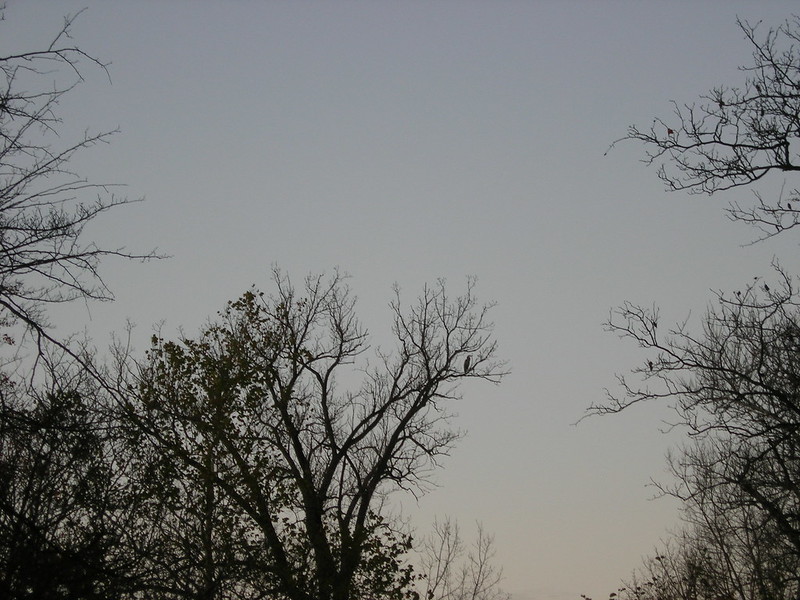
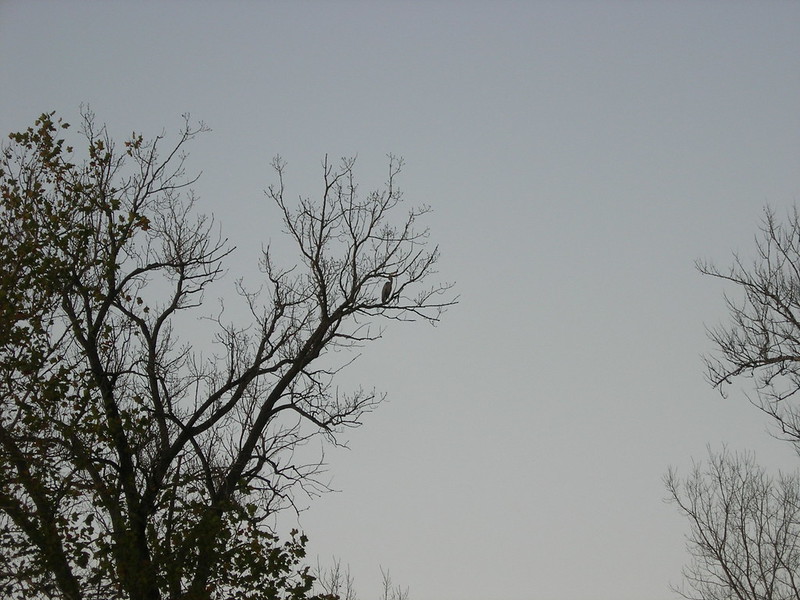


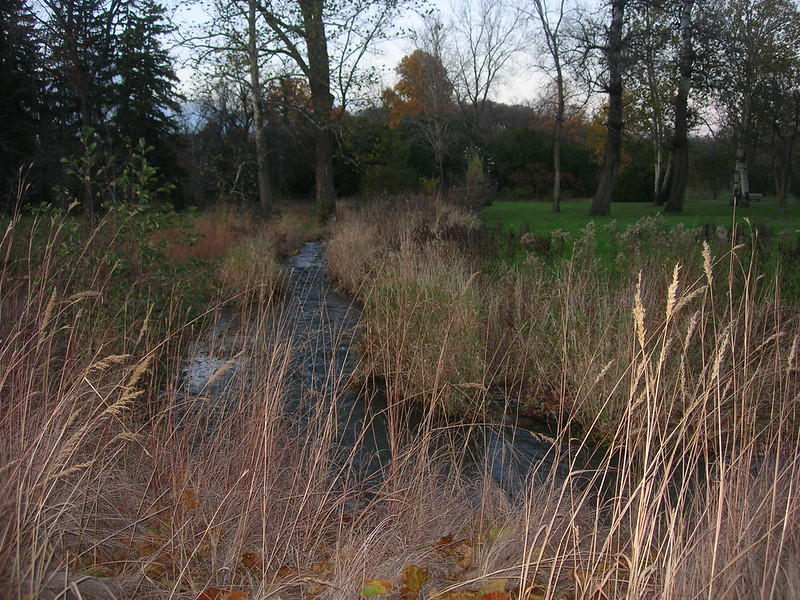
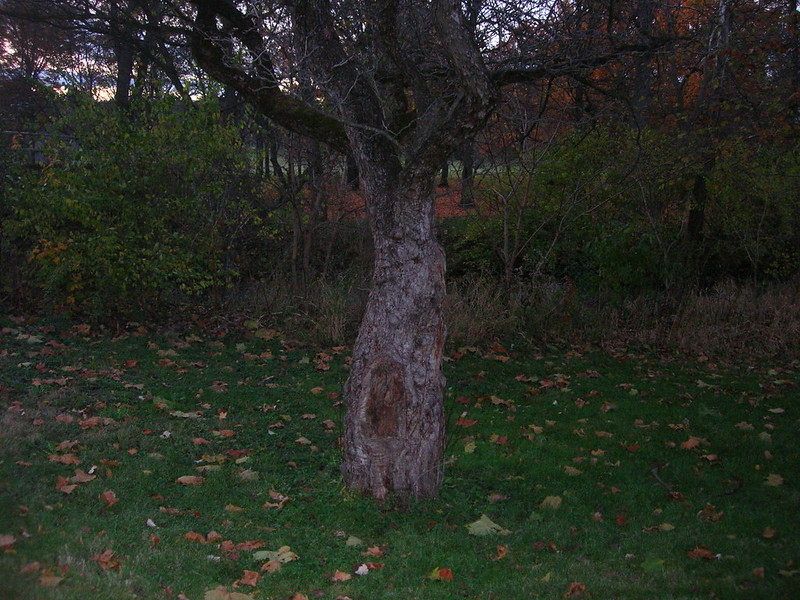
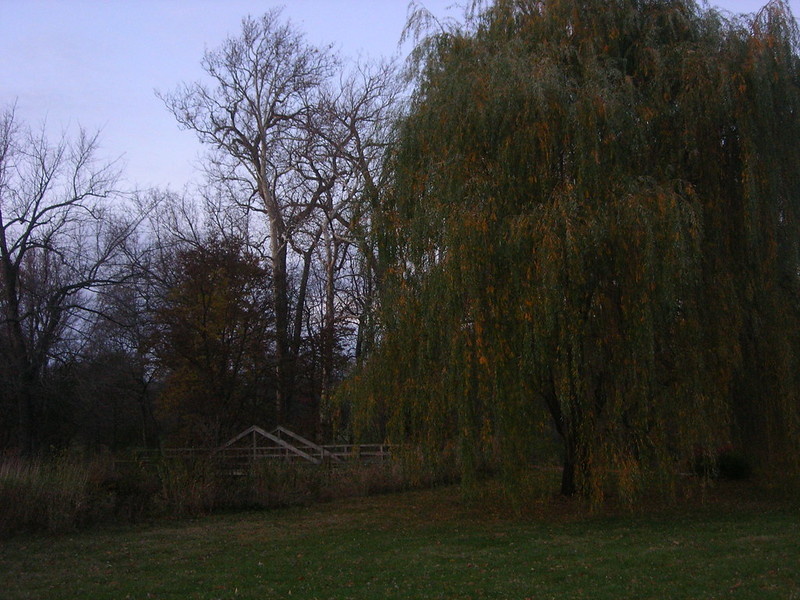

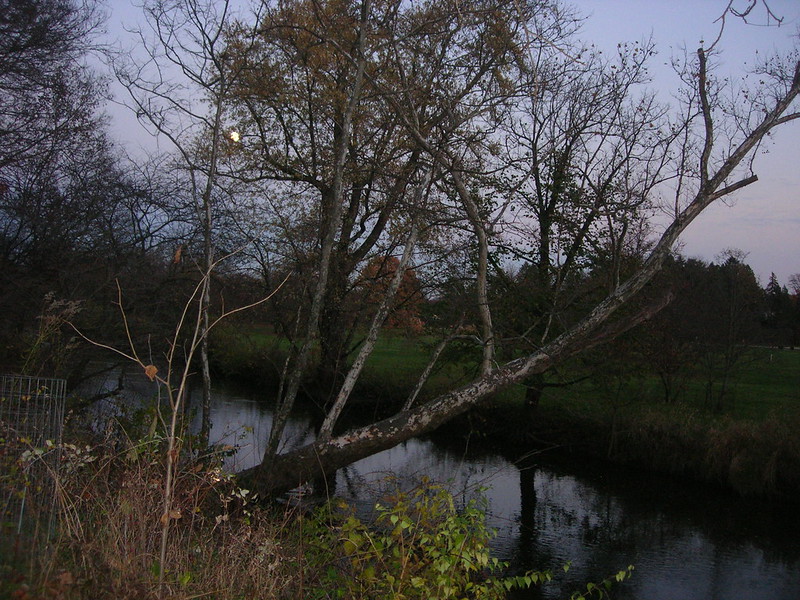


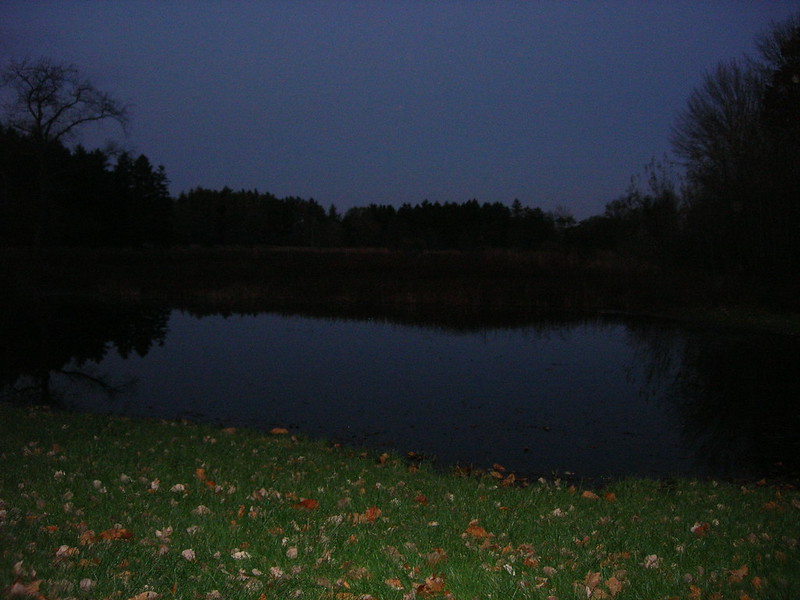


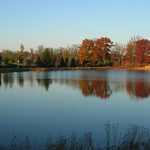






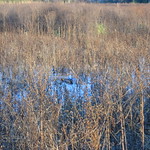





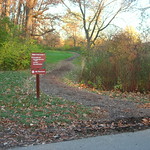

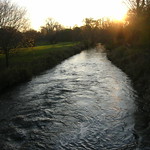

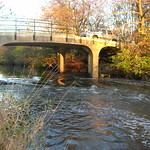







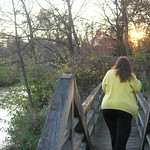
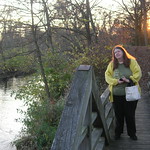
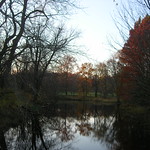

















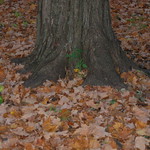

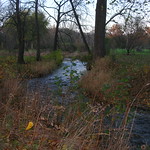
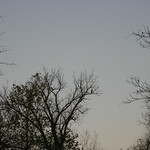





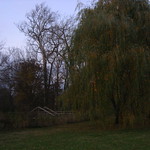





looks like you had fun . so glad you enjoyed .